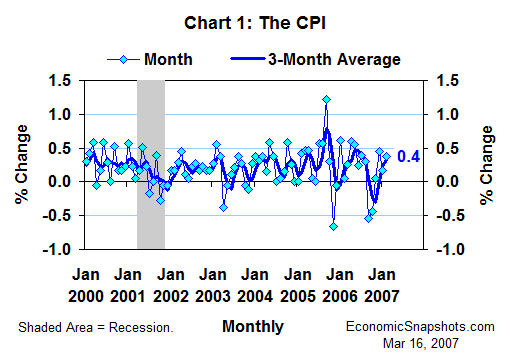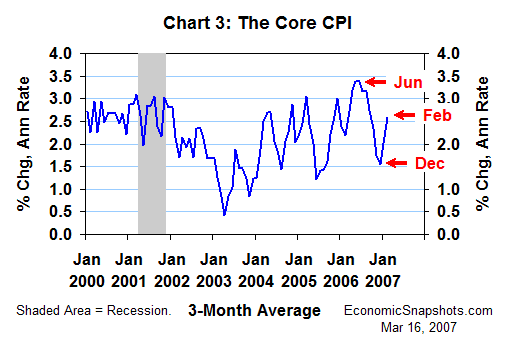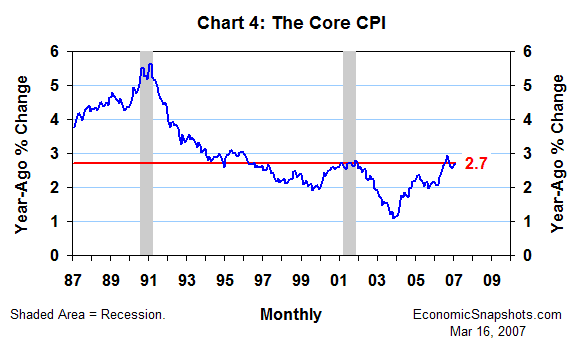
| Back to Index |
March 16, 2007 – Boosted by both food and energy prices, the U.S. consumer price index (CPI) rose by 0.4% in February after a 0.2% January increase (Chart 1).

Consumer food prices showed unusually strong growth for the second straight month – rising by 0.8% in February after a January increase of 0.7%.
Consumer energy prices rose by 0.9% in February, partially reversing January’s 1.5% decline. Factoring in December’s 4.2% increase, these energy prices rose by a net 3.5% over the last three months.
The closely-watched core CPI (excluding food and energy prices) rose by 0.2% in February after a January increase of 0.3% (Chart 2).

Despite this small month-to-month slowing, the three-month trend in core CPI growth continued to accelerate – reaching a 2.6% average annual rate for the three months through February (Chart 3). That’s still 0.8 percentage points below the peak 3.4% three-month trend seen in May and June last year. But, it’s 0.6 percentage points more than the comparable January increase and a full percentage point higher than the same calculation for December.

On the other hand, despite the run up in the last two months, these data do not provide convincing evidence of a sustained increase in core inflation. Compared to the same month last year, the core CPI rose by 2.7% in February, just matching its January increase (Chart 4). This broader twelve-month trend in core CPI growth has been steady at 2.6% to 2.7% since October last year.

As Fed Chairman Bernanke told Congress last month, the FOMC expects a slower trend in real economic growth to gradually reduce the economy’s unacceptably-high core inflation rate, without any further Fed tightening. The February CPI data don’t provide much support for the FOMC’s forecast, but they don’t actively contradict it. Thus, although these data will undoubtedly help to keep the FOMC nervous about the inflation outlook, they seem unlikely to provoke any policy changes at the FOMC meeting next week.
Bottom line: The outlook continues to favor a long stretch of unchanged U.S. monetary policy.
Suzanne Rizzo